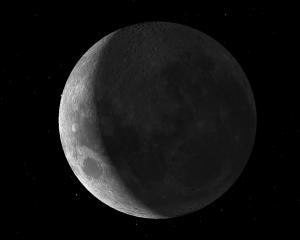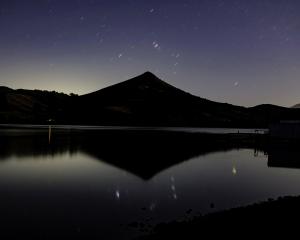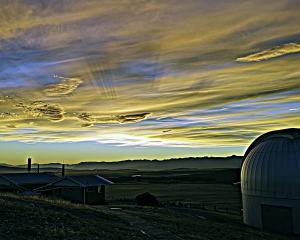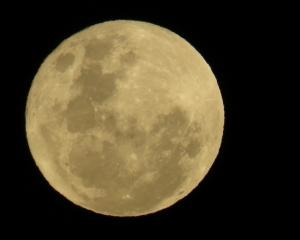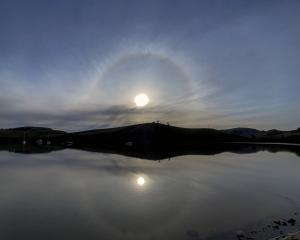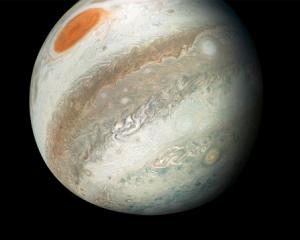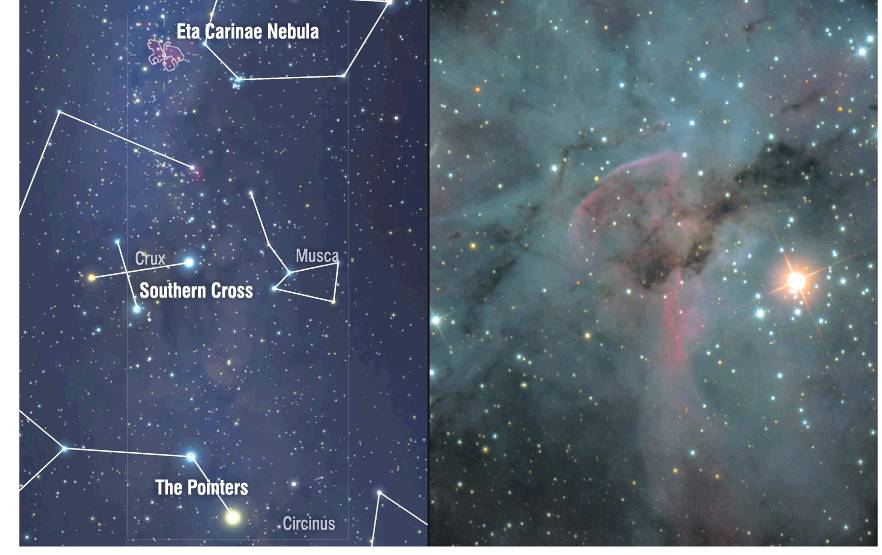
A new moon offers the chance for some splendid skies, writes Ian Griffin.
The moon is new tomorrow morning at 5.04am. This means the next few nights are the perfect time to head out after sunset and enjoy some of the sights on offer in the early autumn sky.
I'm certainly looking forward to spending next weekend at the Mount John Observatory, where I hope to obtain some more pictures of the Eta Carinae Nebula. This really is one of my favourite objects in the sky; it is an amazing glowing cloud of gas easily visible to the unaided eye high in the south when darkness falls. Incidentally, the word nebula is used by astronomers to describe clouds of gas and dust visible in the night sky.
Our target of the week is actually very easy to find even for novice stargazers. You can use Alpha and Beta Centauri (also known as ''the Pointers'') and the Southern Cross as helpful guides.
Once you have found the Pointers, cast your gaze upwards towards the Southern Cross. If you continue onwards, then the Eta Carinae Nebula is very roughly the same distance from the cross on the opposite side to the Pointers; it should be easily visible as a fuzzy patch of light.
Through binoculars, or better still a small telescope, the Eta Carinae Nebula is one of the most astonishingly beautiful objects in the heavens and it's certainly worth spending some time exploring it.
The central core is festooned with whirls of glowing gas, which contrast strikingly with jet-black lanes of dense dark dust, the largest of which is said to resemble a keyhole, which is why it is called the keyhole nebula.
A few weeks ago whilst at the Mount John Observatory, I took a long-exposure photograph of the keyhole, and it is presented below for your enjoyment.
The whole Eta Carinae Nebula is teeming with star clusters, some of which are less than 25 million years old, which makes them very young. At the heart of the nebula is the star Eta Carina, over 100 times more massive and more than four million times more luminous than the sun.





